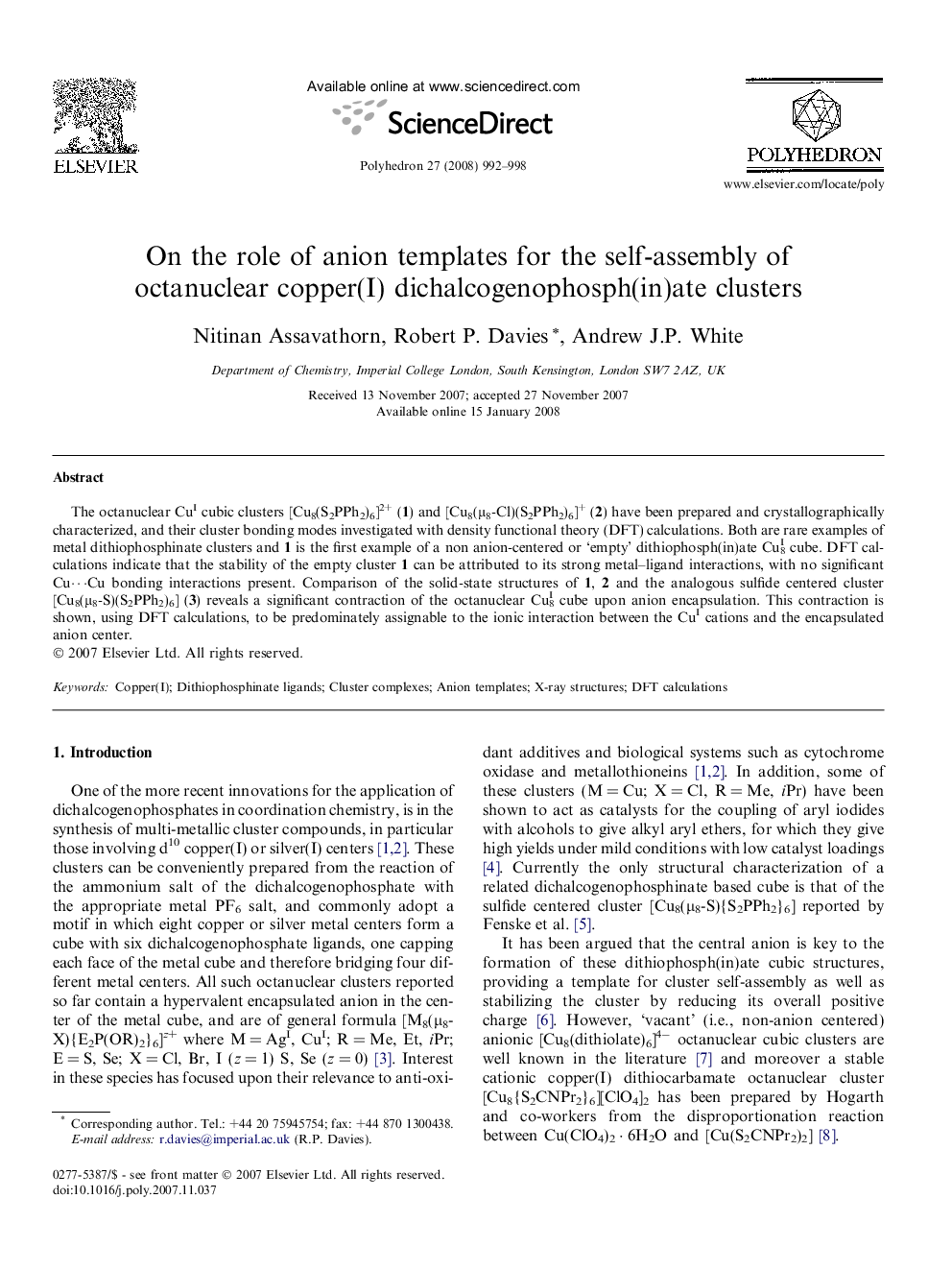| Article ID | Journal | Published Year | Pages | File Type |
|---|---|---|---|---|
| 1340712 | Polyhedron | 2008 | 7 Pages |
The octanuclear CuI cubic clusters [Cu8(S2PPh2)6]2+ (1) and [Cu8(μ8-Cl)(S2PPh2)6]+ (2) have been prepared and crystallographically characterized, and their cluster bonding modes investigated with density functional theory (DFT) calculations. Both are rare examples of metal dithiophosphinate clusters and 1 is the first example of a non anion-centered or ‘empty’ dithiophosph(in)ate CuI8 cube. DFT calculations indicate that the stability of the empty cluster 1 can be attributed to its strong metal–ligand interactions, with no significant Cu⋯Cu bonding interactions present. Comparison of the solid-state structures of 1, 2 and the analogous sulfide centered cluster [Cu8(μ8-S)(S2PPh2)6] (3) reveals a significant contraction of the octanuclear CuI8 cube upon anion encapsulation. This contraction is shown, using DFT calculations, to be predominately assignable to the ionic interaction between the CuI cations and the encapsulated anion center.
Graphical abstractThe cubic octanuclear clusters [Cu8(S2PPh2)6]2+ and [Cu8(μ8-Cl)(S2PPh2)6]+ have been prepared from the reaction of [Ph2PS2][HNEt3] with [CuI(CH3CN)4][PF6] in hexane/CH2Cl2 or refluxing CH2Cl2, respectively. Both are rare examples of copper(I) dithiophosphinate clusters and [Cu8(S2PPh2)6]2+ is the first example of a non-anion-centered dithiophosph(in)ate CuI8 cluster. Theoretical calculations show that the stability of this ‘empty’ cluster can be attributed to the strong metal–ligand interactions.Figure optionsDownload full-size imageDownload as PowerPoint slide
